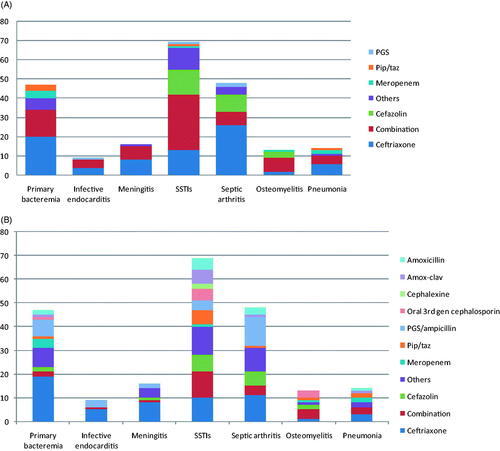Figures & data
Table 1. Demographic and clinical characteristics of patients with invasive Group B Streptococcus (iGBS) diseases compared between those with and without bacteraemia.
Figure 2. (A) Empirical antibiotic therapy and (B) definite antibiotic therapy of invasive Group B Streptococcus (iGBS) disease categorised by clinical manifestation. SSTIs: skin and soft tissue infections; Amox-clav: Amoxicillin/clavulanic acid; PGS: Penicillin G Sodium; Pip/taz: Piperacillin/tazobactam.

Table 2. Demographic and clinical characteristics compared between patients that survived and that died within 30 days (n = 206a).
Table 3. Analysis for factors independently associated with 30-day mortality.
Data availability statement
The data that support the findings of this study are available from the corresponding upon reasonable request.

